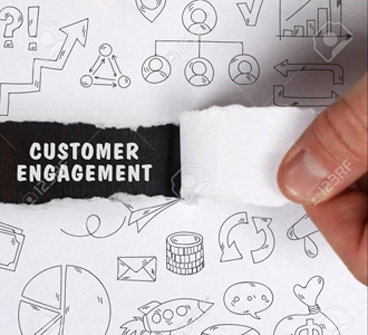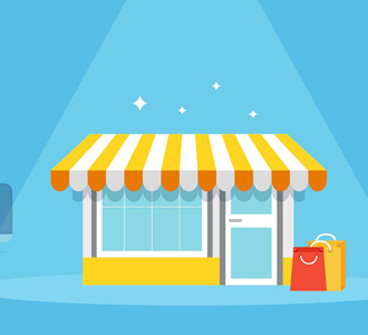Retail marketing is more than just random promotions – it’s personal, relevant, and actionable – and the tools needed are out there and available to provide the best shopping experiences to customers for years to come
Some of our most memorable retail experiences have been due to marketing. Not all of it worked (Pepsi knows all too well), not all of it lasted (Starbucks’ #racetogether campaign was aborted after just 6 days), and not all of it was enough (Toys“R”Us kids eventually grew up).
But hit or miss, marketing has long been a valuable and necessary part of retail.
It’s been the storytelling part of the brand – the part that’s connected emotionally with consumers. From Nike’s timeless Just Do It. campaign to Apple’s Mac vs. PC commercials, exceptional marketing, advertising included, has catapulted brands into household names.
Retailers, however, can no longer rely on cleverness alone to make an impact. And gone are the days when a great product was enough to develop and maintain loyalty. Shoppers want more.
In Building Brand Loyalty Requires Strong Customer Service Skills and Fan Involvement, an article written for Forbes, Forbes Agency Council wrote, “Clients can be perfectly happy with the services you provide, but if they do not feel engaged — or remember why they connected with you in the first place — they may not stay.”
In this vein, brands need to communicate on a personal level with shoppers. Consumer marketers still hold the keys, but lessons might be learned from B2B marketers as well.
Take, for example, one of the foundational aspects of B2B demand generation: nurture. Nurture is an effort of pull and push: pull names into the top of the funnel, then push them to take an action. Historically, this has been all about casting a wide net, but over time, it’s become much more about targeting the right names, not just any names.
In order for this to work, you have to know your audience and stick with it, which is why persona development is so important. If your audience is simply “everyone,” then you’re likely missing the mark. You have to be all in, or you’ll eventually get booted out. Remember, nobody likes lukewarm tea.
Once you’ve developed your personas, it’s time to pull. And to do that, you have to be where your audience is – be that on social media, on your website, or already in your database. Your personas should make clear what identifiers signify interest. As you extend offers to potential customers, the goal is to get the shopper to identify herself.
With this information, you’re armed for engagement. The next step is to push. Where on the journey do you want your shoppers to go next? Should she pair the dress she just bought with earrings for a night out? As she’s more empowered than ever before, let accounting for as many likely options be your guide.
Take Rent the Runway, for instance. RTR ran an exclusive, limited time only campaign right at the start of Spring. The call to action was “Goodbye, Winter.” Succinct, timely, and actionable. Just days earlier, I was on their app looking for wedding guest attire for the end of April. I identified myself – and what I was interested in – and they nailed it by delivering the right message at the right time. The next natural step was to convert online or in their store.
This is the Holy Grail, after all: bridging digital and physical shopping together in a personally relevant way.
Who else does this well? Let’s take a look at Sephora. Their mobile app is a virtual makeup playground, which complements their own physical playground experience. A user “trying on” a particular lipstick, for example, is as great an identifier as any. And the next step in the journey should be an obvious one whether she buys on the app or heads into the store; the possibilities for up-sell and cross-sell are endless.
Amazon is another company looking to close the gap between digital and physical retail with its Whole Foods acquisition and subsequent initiatives. Just by adding Amazon lockers into Whole Foods locations, micro visits (visits between three to five minutes) to the stores have increased seven percent. Imagine the conversion opportunities throughout that shopper journey.
The B2B marketer’s playbook doesn’t end here, but this presents a natural transition point back to B2C. Technology, service, and content fuel both engagement engines, and they’re worth exploring in turn.
Technology
All marketing is integrated. There’s no way around it. A campaign runs across as many channels as possible and necessary, because shoppers are the ultimate channel determinant.
Using CRMs, marketing automation and retail analytics solutions, you will gain consistency across all of your channels to deliver a seamless experience to your shoppers. There are also tools out there like those from Radiance Labs, which enable communication across platforms, and from SATO Global Solutions, which improve operational efficiency. Additionally, AI and machine learning have made personalization even simpler by allowing auto-suggestions based on similar engagements.
Further, the insights you gather on in-store shopping behaviors, including shopper traffic, conversion rate and shopper yield, are invaluable.
Today’s companies, no matter B2B or B2C, must be agile. You have to be able to act swiftly to changes, requests, and demands. Intuition will always be important, but intuition coupled with real data is the ultimate game changer.
Service
Have you made any sacrifices to ensure top-notch customer service across your brand? Zappos has.
Zappos CEO, Tony Hsieh, wrote in his book, Delivering Happiness: A Path to Profits, Passion, and Purpose, “To build the Zappos brand into being about the very best customer service, we needed to make sure customer service was the entire company, not just a department. We needed to move our entire headquarters from San Francisco to wherever we wanted to build out our call center.”
That’s commitment.
One of the most difficult parts about building a brand is consistency. Getting your team on the same page regarding customer experience is what separates winning retailers and businesses from the crowd below. With the shopper in the driver’s seat, there may be no other priority as important as ensuring extraordinary customer service.
So maybe you don’t need to move everyone in your company to Las Vegas, but how are you connecting with your employees so they feel personally responsible for how shoppers relate to your brand? Marketing can only do so much.
Content
Content breathes life into your campaigns, and there’s no shortage of it. From content created in-house to user-generated content, there’s plenty of videos, posts, articles and more out there for all of us.
But this is also where those personas come back in. Not every piece of content is for everyone, so there’s a little bit of strategy in this. Someone who abandons their cart online, for example, probably doesn’t need the same content as someone who just reached their loyalty points threshold in-store.
There’s more to content than just digital assets (Marine Layer has a printed catalog!), but digital is a quick and easy way to connect with shoppers via ads, reviews, your website, and email. Here is where you can get really targeted and get the perfect message in front of your ideal customer profile.
In some cases, however, your content will reach a large swath of your audience all at once (think social media) and in that case, think clearly about the action you want your shoppers to take. And again, push and follow them along on the journey so you’re ready to deliver the most appropriate content to them at the right time.
To conclude, be responsive and agile. And always consider engagement.
Marketing is more than just random promotions – it’s personal, relevant, and actionable – and the tools you need are out there and available for you to provide the best shopping experiences to your customers for years to come (companies like Patagonia are planning for a future 100 years from now!).
So, if you’re not doing the same – thinking about long term brand loyalty and conversion – then what are we even doing here?





